Monthly Archives: September 2020
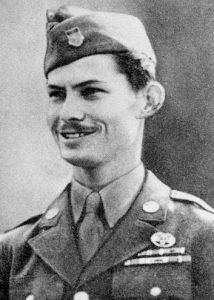 As with any war, there are a number of people who, because of their religious or personal beliefs, cannot bring themselves to participate in the taking of another life. That leaves war off the table for them. Desmond Doss, born February 7, 1919, was a United States Army corporal who served as a combat medic in the infantry during World War II. That’s what happened to the conscientious objectors. They didn’t just get to go home, they stayed in as a medic, without a gun, who was known as “Preacher” to those around him. Doss may not have had a gun, but he managed to be awarded the Bronze Star Medal with a “V” device, for exceptional valor in aiding wounded soldiers under fire in Guam and the Philippines. Doss went on to distinguish himself in the Battle of Okinawa, saved the lives of 50–100 wounded infantrymen atop the area known by the 96th Division as the Maeda Escarpment or Hacksaw Ridge. With that action, Doss became the only conscientious objector to receive the Medal of Honor.
As with any war, there are a number of people who, because of their religious or personal beliefs, cannot bring themselves to participate in the taking of another life. That leaves war off the table for them. Desmond Doss, born February 7, 1919, was a United States Army corporal who served as a combat medic in the infantry during World War II. That’s what happened to the conscientious objectors. They didn’t just get to go home, they stayed in as a medic, without a gun, who was known as “Preacher” to those around him. Doss may not have had a gun, but he managed to be awarded the Bronze Star Medal with a “V” device, for exceptional valor in aiding wounded soldiers under fire in Guam and the Philippines. Doss went on to distinguish himself in the Battle of Okinawa, saved the lives of 50–100 wounded infantrymen atop the area known by the 96th Division as the Maeda Escarpment or Hacksaw Ridge. With that action, Doss became the only conscientious objector to receive the Medal of Honor.
Before World War II began, Doss worked as a joiner in a shipyard in Newport News, Virginia. While he didn’t feel like he could kill people, Doss did want to serve his country. So, despite being 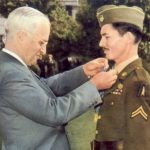 offered a deferment because he worked in the shipyards, Doss joined the Army on April 1, 1942 at Camp Lee, Virginia. Doss was sent to Fort Jackson in South Carolina for training with the reactivated 77th Infantry Division. His brother, Harold Doss, served aboard the USS Lindsey. Still, Doss refused to kill an enemy soldier or carry a weapon into combat because of his personal beliefs as a Seventh-day Adventist. He consequently became a medic assigned to the 2nd Platoon, Company B, 1st Battalion, 307th Infantry, 77th Infantry Division. While he did not carry a weapon, Doss was wounded four times in Okinawa, because he put himself in harms way to help his fellow soldiers. He was evacuated on May 21, 1945, aboard the USS Mercy. Doss suffered a left arm fracture from a sniper’s bullet and at one point had seventeen pieces of shrapnel embedded in his body.
offered a deferment because he worked in the shipyards, Doss joined the Army on April 1, 1942 at Camp Lee, Virginia. Doss was sent to Fort Jackson in South Carolina for training with the reactivated 77th Infantry Division. His brother, Harold Doss, served aboard the USS Lindsey. Still, Doss refused to kill an enemy soldier or carry a weapon into combat because of his personal beliefs as a Seventh-day Adventist. He consequently became a medic assigned to the 2nd Platoon, Company B, 1st Battalion, 307th Infantry, 77th Infantry Division. While he did not carry a weapon, Doss was wounded four times in Okinawa, because he put himself in harms way to help his fellow soldiers. He was evacuated on May 21, 1945, aboard the USS Mercy. Doss suffered a left arm fracture from a sniper’s bullet and at one point had seventeen pieces of shrapnel embedded in his body.
After the war, Doss went home to continue his career in carpentry. Unfortunately, extensive damage to his left 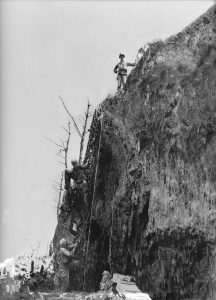 arm made carpentry a thing of his past. In 1946, Doss was diagnosed with tuberculosis, which he had contracted on Leyte. He underwent treatment for five and a half years, losing a lung and five ribs before being discharged from the hospital in August 1951 with 90% disability. He continued to receive treatment from the military. Then, an overdose of antibiotics rendered him completely deaf in 1976, after which he was given 100% disability. He received a cochlear implant in 1988, and was able to finally hear again. Despite the severity of his injuries, Doss managed to raise a family on a small farm in Rising Fawn, Georgia. He married Dorothy Pauline Schutte on August 17, 1942, and they had one child, Desmond “Tommy” Doss Jr, born in 1946. Dorothy died on November 17, 1991 in a car accident, in which Desmond was driving and lost control of the vehicle. It was a devastating loss. Doss remarried on July 1, 1993, to Frances May Duman. In March of 2006, he was hospitalized for difficulty breathing. Doss died on March 23, 2006, at his home in Piedmont, Alabama.
arm made carpentry a thing of his past. In 1946, Doss was diagnosed with tuberculosis, which he had contracted on Leyte. He underwent treatment for five and a half years, losing a lung and five ribs before being discharged from the hospital in August 1951 with 90% disability. He continued to receive treatment from the military. Then, an overdose of antibiotics rendered him completely deaf in 1976, after which he was given 100% disability. He received a cochlear implant in 1988, and was able to finally hear again. Despite the severity of his injuries, Doss managed to raise a family on a small farm in Rising Fawn, Georgia. He married Dorothy Pauline Schutte on August 17, 1942, and they had one child, Desmond “Tommy” Doss Jr, born in 1946. Dorothy died on November 17, 1991 in a car accident, in which Desmond was driving and lost control of the vehicle. It was a devastating loss. Doss remarried on July 1, 1993, to Frances May Duman. In March of 2006, he was hospitalized for difficulty breathing. Doss died on March 23, 2006, at his home in Piedmont, Alabama.

 My grandson, Josh Petersen is such a hard working young man. He has two jobs, totaling up to at least 12 hours a day. I don’t know how he does it, and still maintains his good disposition. He has always been an easy going guy though…not a lot of things get him upset. If you do cross that line, however…look out. Still, even if he yells at you, he never holds a grudge, so you are forgiven almost immediately…and as Grandma, I never get yelled at, haha!! To be honest he doesn’t yell at his parents either.
My grandson, Josh Petersen is such a hard working young man. He has two jobs, totaling up to at least 12 hours a day. I don’t know how he does it, and still maintains his good disposition. He has always been an easy going guy though…not a lot of things get him upset. If you do cross that line, however…look out. Still, even if he yells at you, he never holds a grudge, so you are forgiven almost immediately…and as Grandma, I never get yelled at, haha!! To be honest he doesn’t yell at his parents either.
A couple of years ago, Josh became an uncle to a sweet little girl, and will be uncle to a sweet little boy in November. It was one of the greatest moments in his life. He loves being uncle, even though he doesn’t get to see his niece too often, because he works so many hours. Josh has always loved kids, and animals. He has a number of fur babies, and recently lost his oldest dog, Molly, who was also his constant companion whenever he wasn’t working. Molly was a Dachshund, and Molly was his girl. He loved her very much. She was originally purchased by his parents for the family, but from the beginning, Molly was Josh’s dog. Animals are like that. They pick out the “human” they want to belong to, and there is little you can do to change their mind. Molly picked Josh, and the rest is history.
Josh was one of many essential workers during the Covid-19 pandemic. He works at Sanford’s Grub and Pub at night, and All Out Fire during the day. Both were considered essential jobs. It helped in the job situation, but while many of us were hanging out at home, watching television, he was still hard at it. Josh is such a trustworthy guy. He originally started working at Sanford’s when he was 15 years old. They didn’t normally hire 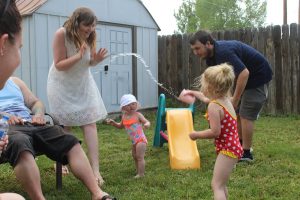 kids at that age, but they “took a chance” on him, and they have never been sorry. He has worked there longer than anyone else, including the managers, and he is the current kitchen manager. At just 22, that is a pretty good accomplishment.
kids at that age, but they “took a chance” on him, and they have never been sorry. He has worked there longer than anyone else, including the managers, and he is the current kitchen manager. At just 22, that is a pretty good accomplishment.
Josh may not have lots of free time, but he has good friends that he enjoys hanging out with…people he has known for years. Josh is a loyal friend too, and he is the kind of guy who will give you the shirt off his back, if you needed it. It doesn’t matter what the hour, if he can help, he will help. That’s just the way Josh is. Today is Josh’s 22nd birthday. Happy birthday Josh!! Have a great day!! We love you!!
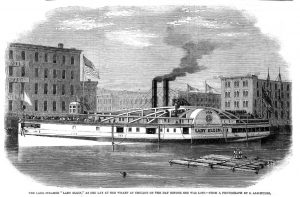 Just before midnight on September 7, 1860, a palatial sidewheel steamboat named the Lady Elgin left Chicago bound for Milwaukee. She was carrying about 400 passengers. She was returning to Milwaukee from a day-long outing to Chicago. Also on the water that night was the Augusta, a schooner filled with lumber. The captain of the Lady Elgin took notice of the Augusta around 2:30am. The night was stormy, and visibility was poor. Storm clouds raged and the waves were intense.
Just before midnight on September 7, 1860, a palatial sidewheel steamboat named the Lady Elgin left Chicago bound for Milwaukee. She was carrying about 400 passengers. She was returning to Milwaukee from a day-long outing to Chicago. Also on the water that night was the Augusta, a schooner filled with lumber. The captain of the Lady Elgin took notice of the Augusta around 2:30am. The night was stormy, and visibility was poor. Storm clouds raged and the waves were intense.
Suddenly, the lumber on the Augusta shifted, causing the two ships to collide. Instantly, the party atmosphere that had been on the Lady Elgin, turned to chaos and confusion. The Augusta received only minor damage in the collision, and kept right on sailing to Chicago. It wasn’t an unusual occurrence in those days. It’s possible that the Augusta assumed that if it wasn’t badly hurt, that larger ship probably wasn’t either. I can’t say for sure, but I know that this collision, in which the Augusta did not stop is not the first I have heard of such an incident in Maritime history. A large hole in the side of the Lady Elgin doomed the ship, which sank within thirty minutes. Only three lifeboats were able to be loaded and set into the water. The ships large upper hurricane deck fell straight into the water and served as a raft for some forty people.
The ship had crashed two to three miles off the shore of Highland Park, but the waves were so strong that survivors, bodies, and debris were all swept down to the northern shore of Winnetka. In those days, the lakeshore in this area consisted of a narrow strip of beach rising up to clay cliffs almost 50 feet high. An angry line of breakers churned up from the storm were crashing ashore. Around 6:30am the first of the three lifeboats made it to shore in the vicinity of the Jared Gage house…which still stands at 1175 Whitebridge Hill Road. A desperate call for assistance went out to the town from the Gage house. The people of Winnetka rode 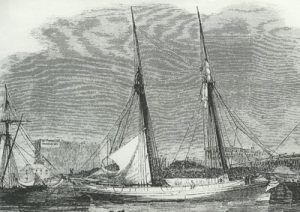 horses down to Northwestern University and the Garrett Biblical Institute to find any young men to help pull out survivors. The regional newspapers were quickly informed by telegraph. The newly completed Chicago and Milwaukee train line brought people to Winnetka to help as word of the accident spread. The effort to save the people on the Lady Elgin would have been a phenomenal feat today, but it was carried out in 1860, making it even more amazing.
horses down to Northwestern University and the Garrett Biblical Institute to find any young men to help pull out survivors. The regional newspapers were quickly informed by telegraph. The newly completed Chicago and Milwaukee train line brought people to Winnetka to help as word of the accident spread. The effort to save the people on the Lady Elgin would have been a phenomenal feat today, but it was carried out in 1860, making it even more amazing.
The crowds on the bluffs and beaches watched as pieces of wreckage washed up near the site of the present Winnetka water tower. By 10:00am, the bluffs were littered with people who had been strong enough to withstand the fierce storm of the previous night. Lastly came the hurricane deck with Captain Wilson and eight survivors whom the storm had thus far spared. Then, before their eyes, this storm-battered deck was dashed to pieces on an offshore sandbar and all on board were lost.
The storm left a tremendous undertow, creating the tragic situation…the exhausted victims had drifted close enough to the Winnetka shore to see it, only to be held back by the breakers. As the horrified onlookers watch, they died in full view of the people on shore, who could do nothing but watch. Men were lowered from the bluff with rope tied around their waists in attempts to pull people in to safety. One Evanston seminary student, Edward Spencer, is credited with saving 18 lives. Spencer is said to have repeatedly rushed into the sea, being battered by debris in order to save more people. I do not know, but I suspect that he is some relation to me on my Spencer side, and I feel honored that he was such a heroic figure. Spencer is said to have wondered many times in the aftermath, “Did I do my best?” It is the mark of a hero, never to feel like they did enough. Another man, Joseph Conrad, was said to have pulled 28 to safety. Other unknown rescuers pulled in survivors up and 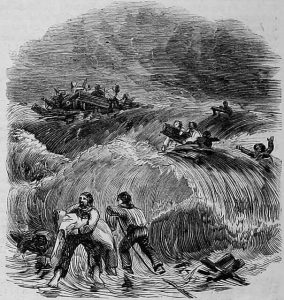 down the Winnetka and North Shore coastline.
down the Winnetka and North Shore coastline.
The Gage house, the Artemas Carter house at 515 Sheridan Road, and other Winnetka residences served as temporary hospitals. The newly-built Winnetka train depot served as a morgue. Winnetka residents brought food and clothing for the survivors. It is estimated that 302 people lost their lives that day, the exact number is unknown, as the ships manifest went down with the ship. The 1860 census shows only 130 residents in the town of Winnetka. The tragedy captured the nation’s attention, but was quickly overshadowed by the 1860 elections and the Civil War. Such is the way of things. An tragic event is only well remembered, until another comes to take its place.
 When a volcano hasn’t erupted for 400 years, people naturally assume that the volcano is dead, but volcanos don’t really die, they become dormant. In the case of Mount Sinabung, located on the Indonesian island of Sumatra. On August 29, 2010, Mount Sinabung experienced a minor eruption. The mountain had been rumbling for several days. Ash spewed into the atmosphere up to 0.93 miles high and lava was seen overflowing the crater. The four centuries of quiet were over. The most recent eruption prior to 2010 was in 1600. On August 31, 6,000 of the 30,000 villagers who had been evacuated returned to their homes. As volcanoes go, a category “A” must be monitored frequently, because it is very active. Mount Sinabung was assigned to a category “B,” meaning that no one would really know that more eruptions were on the horizon, unless more rumbling was heard in the days ahead
When a volcano hasn’t erupted for 400 years, people naturally assume that the volcano is dead, but volcanos don’t really die, they become dormant. In the case of Mount Sinabung, located on the Indonesian island of Sumatra. On August 29, 2010, Mount Sinabung experienced a minor eruption. The mountain had been rumbling for several days. Ash spewed into the atmosphere up to 0.93 miles high and lava was seen overflowing the crater. The four centuries of quiet were over. The most recent eruption prior to 2010 was in 1600. On August 31, 6,000 of the 30,000 villagers who had been evacuated returned to their homes. As volcanoes go, a category “A” must be monitored frequently, because it is very active. Mount Sinabung was assigned to a category “B,” meaning that no one would really know that more eruptions were on the horizon, unless more rumbling was heard in the days ahead 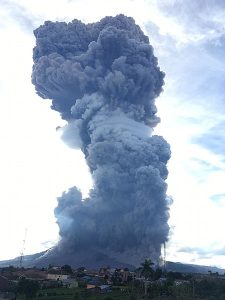 of the eruption. Following the eruption, the Indonesian Red Cross Society and the Health Ministry of Indonesia sent doctors and medicines to the area. The National Disaster Management Agency also provided face masks and food to assist the evacuees.
of the eruption. Following the eruption, the Indonesian Red Cross Society and the Health Ministry of Indonesia sent doctors and medicines to the area. The National Disaster Management Agency also provided face masks and food to assist the evacuees.
On Friday, September 3, 2010, two more eruptions occurred. The first one happened at 4:45am, forcing more villagers to leave their houses…some of whom had only returned the day before. This Was the biggest eruption to that date…maybe another reason to start to feel apprehensive. In this eruption, ash spewed up into the atmosphere about 1.9 miles high. In the hours before the eruption, a warning had been issued through the volcanology agency, and most villagers were prepared to leave quickly. A second eruption occurred the same evening, around 6pm. The eruption came with earthquakes which were felt up to 15.5 miles away from the volcano.
Then, on Tuesday September 7, Mount Sinabung erupted yet again…its biggest eruption since it had become active on August 29, 2010. Finally, Mount Sinabung had reached the point of a category “A” listing. Experts warned of more eruptions to come and began monitoring it closely. Indonesia’s chief vulcanologist, Surono, said 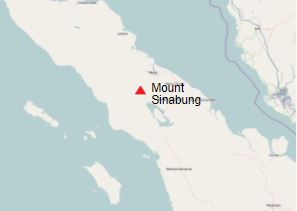 “It was the biggest eruption yet and the sound was heard from 8 kilometers away. The smoke was 5,000 meters in the air.” Heavy rain mixed with the ash to form muddy coatings, a centimeter thick, on buildings and trees. Electricity in one village was cut off, but there were no casualties in that instance. At least 14 people were killed in the early days of the eruptions. Following the reawakening of Mount Sinabung, it has erupted numerous times over the years since, with eruptions every year. It is a highly volatile volcano. The last eruption of Mount Sinabung was on August 10, 2020, producing an eruption column of volcanic materials as high as 16,400 feet into the sky. It doesn’t look like Mount Sinabung will become dormant again anytime soon.
“It was the biggest eruption yet and the sound was heard from 8 kilometers away. The smoke was 5,000 meters in the air.” Heavy rain mixed with the ash to form muddy coatings, a centimeter thick, on buildings and trees. Electricity in one village was cut off, but there were no casualties in that instance. At least 14 people were killed in the early days of the eruptions. Following the reawakening of Mount Sinabung, it has erupted numerous times over the years since, with eruptions every year. It is a highly volatile volcano. The last eruption of Mount Sinabung was on August 10, 2020, producing an eruption column of volcanic materials as high as 16,400 feet into the sky. It doesn’t look like Mount Sinabung will become dormant again anytime soon.
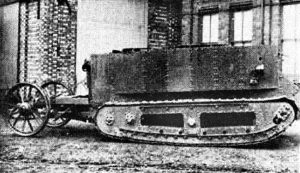 When I think of a tank, my thoughts go to an almost indestructible war machine, and I’m sure many people would agree with me. The tank was first introduced on September 6, 1915 in response to the trench warfare era of World War I. A British army colonel named Ernest Swinton and secretary of the Committee for Imperial Defense, William Hankey, championed the idea of an armored vehicle with “conveyor-belt-like tracks” over its wheels that could break through enemy lines and traverse difficult territory. It was a great idea, but the prototype tank nicknamed Little Willie manufactured in England was far from an overnight success. The tank was heavy, weighing in at 14 tons, but the big problem was that it got stuck in trenches and crawled over rough terrain at only two miles per hour. A tank isn’t much good if it has to be rescued, instead of rescuing the soldiers. It was also slow, and it became overheated and couldn’t cross the trenches. A second prototype, known as “Big Willie,” was produced. By 1916, this armored vehicle was deemed ready for battle and made its debut at the First Battle of the Somme near Courcelette, France, on September 15 of that year. Known as the Mark I, this first batch of tanks was hot, noisy and unwieldy and suffered mechanical malfunctions on the battlefield. Still, people began to realize the tank’s potential. Further design improvements were made and at the Battle of Cambrai in November 1917, 400 Mark IV’s proved much more successful than the Mark I, capturing 8,000 enemy troops and 100 guns.
When I think of a tank, my thoughts go to an almost indestructible war machine, and I’m sure many people would agree with me. The tank was first introduced on September 6, 1915 in response to the trench warfare era of World War I. A British army colonel named Ernest Swinton and secretary of the Committee for Imperial Defense, William Hankey, championed the idea of an armored vehicle with “conveyor-belt-like tracks” over its wheels that could break through enemy lines and traverse difficult territory. It was a great idea, but the prototype tank nicknamed Little Willie manufactured in England was far from an overnight success. The tank was heavy, weighing in at 14 tons, but the big problem was that it got stuck in trenches and crawled over rough terrain at only two miles per hour. A tank isn’t much good if it has to be rescued, instead of rescuing the soldiers. It was also slow, and it became overheated and couldn’t cross the trenches. A second prototype, known as “Big Willie,” was produced. By 1916, this armored vehicle was deemed ready for battle and made its debut at the First Battle of the Somme near Courcelette, France, on September 15 of that year. Known as the Mark I, this first batch of tanks was hot, noisy and unwieldy and suffered mechanical malfunctions on the battlefield. Still, people began to realize the tank’s potential. Further design improvements were made and at the Battle of Cambrai in November 1917, 400 Mark IV’s proved much more successful than the Mark I, capturing 8,000 enemy troops and 100 guns.
As with any new invention, the tank had a few “bugs” to be worked out. Still, I doubt if that did much to assuage the fears of the men in the tanks when they got stuck in the trenches. Tanks are supposed to be able to withstand gun shots and shrapnel, but would the tank be able to do so. After all, tanks weren’t supposed to get stuck either, so just how trustworthy was the armor plating. A tank that gets stuck is really just a “sitting duck.” Nevertheless, improvements were made to the original prototype and eventually tanks completely transformed military battlefields.
Trench warfare of World War I truly was brutal, almost more for the men in the trenches than anyone else.  Finally, the men appealed to British navy minister Winston Churchill, who believed in the concept of a “land boat” and organized a Landships Committee to begin developing a prototype. To keep the project secret from enemies, production workers were reportedly told the vehicles they were building would be used to carry water on the battlefield…alternate theories suggest the shells of the new vehicles resembled water tanks. Either way, the new vehicles were shipped in crates labeled “tank” and the name stuck. Tanks rapidly became an important military weapon. During World War II, they played a prominent role across numerous battlefields. The tanks potential was finally an accepted fact.
Finally, the men appealed to British navy minister Winston Churchill, who believed in the concept of a “land boat” and organized a Landships Committee to begin developing a prototype. To keep the project secret from enemies, production workers were reportedly told the vehicles they were building would be used to carry water on the battlefield…alternate theories suggest the shells of the new vehicles resembled water tanks. Either way, the new vehicles were shipped in crates labeled “tank” and the name stuck. Tanks rapidly became an important military weapon. During World War II, they played a prominent role across numerous battlefields. The tanks potential was finally an accepted fact.

 My husband, Bob Schulenberg’s aunt, Pearl Hein has always felt like a kindred spirit to me. Our lives have taken some of the same turns and in many ways that makes us feel connected. Pearl spend a number of years taking care of her aging parents, and when her husband, Bob’s Uncle Ed had a stroke, Pearl stepped in again to nurse him back to health. As we both know, you can only prolong life for your loved one. Everyone dies at some point, and no matter how young or how old they are, we just aren’t ready for them to go when they do. Each of us knows that we would have continued to fight for their lives with all we had. We weren’t ready to let them go. We couldn’t understand why. Did we do something wrong? Did we miss something? We will never know, of course, but we will always have regrets…mainly the regret that they aren’t here with us anymore. Of course, we know that Heaven is far greater for all of them, but we miss them terribly, and it is so hard to move forward in our daily lives.
My husband, Bob Schulenberg’s aunt, Pearl Hein has always felt like a kindred spirit to me. Our lives have taken some of the same turns and in many ways that makes us feel connected. Pearl spend a number of years taking care of her aging parents, and when her husband, Bob’s Uncle Ed had a stroke, Pearl stepped in again to nurse him back to health. As we both know, you can only prolong life for your loved one. Everyone dies at some point, and no matter how young or how old they are, we just aren’t ready for them to go when they do. Each of us knows that we would have continued to fight for their lives with all we had. We weren’t ready to let them go. We couldn’t understand why. Did we do something wrong? Did we miss something? We will never know, of course, but we will always have regrets…mainly the regret that they aren’t here with us anymore. Of course, we know that Heaven is far greater for all of them, but we miss them terribly, and it is so hard to move forward in our daily lives.
Pearl’s dad, Merle Krueger passed away in 2002 at 97; her mom, Minnie (McCain) Krueger passed away in 2004 at 89; Uncle Ed passed way on October 16, 2019 at 76; and sadly Pearl’s son Larry passed away passed away just 3 months after his dad on January 30, 2020. It has been a really hard year for Pearl, and moving forward is not easy, but it is my hope that today, her birthday can become a new start…or at least a new normal. Pearl has always been such a loving and giving person, and she deserves to be happy too. There are so many people who love her, and I pray she will find joy in her friendships. Pearl and I have another thing in common…we are both Christians. We both believe that there is life after death, and that our loved ones are waiting for us to join them in Heaven someday.
Pearl has spent much of her life in service to others, and I know that many people are thankful to have known her. Pearl met many of her friends in the years she spent working at the IGA grocery store in Forsyth, Montana. 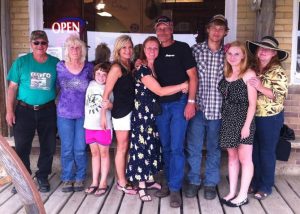
 She was an indispensable employee, and when she retired to take care of Ed, they weren’t sure how they were going to function without her. I remember that whenever we would come into town, we always knew where to find Pearl, and when we went into the store, they only had to hear that we were looking for Pearl, and they were certain of who we meant. Everyone knows, and loves Pearl. She is just the kind of person you are drawn to. Today is Pearl’s birthday. Happy birthday Pearl!! Have a great day!! We love you!!
She was an indispensable employee, and when she retired to take care of Ed, they weren’t sure how they were going to function without her. I remember that whenever we would come into town, we always knew where to find Pearl, and when we went into the store, they only had to hear that we were looking for Pearl, and they were certain of who we meant. Everyone knows, and loves Pearl. She is just the kind of person you are drawn to. Today is Pearl’s birthday. Happy birthday Pearl!! Have a great day!! We love you!!
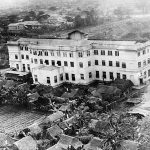
 When we think of Prisoners of War during the world wars, we usually think of the prisoners as being men, but there were women too…nurses. At that time, women couldn’t be in combat positions, and if they wanted to serve their country, it had to be as nurses or medics. One group of United States Army Nurse Corps and United States Navy Nurse Corps nurses, were stationed in the Philippines at the outset of the Pacific War, were later dubbed the Angels of Bataan (also including the the nurses of the island of Corregidor), were also called the Angels of Bataan and Corregidor and the Battling Belles of Bataan. The 78 nurses served during the Battle of the Philippines (1941–42). When Bataan and Corregidor fell, 11 Navy nurses, 66 army nurses, and 1 nurse-anesthetist were captured and imprisoned in and around Manila. These loyal, patriotic women continued to serve as a nursing unit while prisoners of war, taking care of their fellow prisoners, even if it meant punishment for their actions.
When we think of Prisoners of War during the world wars, we usually think of the prisoners as being men, but there were women too…nurses. At that time, women couldn’t be in combat positions, and if they wanted to serve their country, it had to be as nurses or medics. One group of United States Army Nurse Corps and United States Navy Nurse Corps nurses, were stationed in the Philippines at the outset of the Pacific War, were later dubbed the Angels of Bataan (also including the the nurses of the island of Corregidor), were also called the Angels of Bataan and Corregidor and the Battling Belles of Bataan. The 78 nurses served during the Battle of the Philippines (1941–42). When Bataan and Corregidor fell, 11 Navy nurses, 66 army nurses, and 1 nurse-anesthetist were captured and imprisoned in and around Manila. These loyal, patriotic women continued to serve as a nursing unit while prisoners of war, taking care of their fellow prisoners, even if it meant punishment for their actions.
After the attack on Pearl Harbor, the Japanese immediately went after the Philippines and the military personnel based there, including the nurses. In late December 1941, many of the nurses were assigned to a pair of battlefield hospitals on Bataan named Hospital #1 and Hospital #2. These hospitals included the first open-air wards since the Civil War. Tropical diseases, including malaria and dysentery, were widespread among both hospital patient and staff. Just prior to the fall of Bataan on April 9, 1942, the nurses serving there were ordered to the island fortress of Corregidor by General Wainwright (commander of the forces in the Philippines after MacArthur was ordered to Australia). Wainwright tried to save as many people as he could by moving them to the safer island of Corregidor. In the end it made no difference, because Corregidor was captured too.
During their occupation of the Philippines, the Japanese commandeered the campus of the University of Santo Tomas and converted it to be the Santo Tomas Internment Camp. In addition to its civilian population, Santo Tomas became the initial internment camp for both the army and navy nurses, with the army nurses remaining there until their liberation, while the soldiers were taken on the Bataan Death March. While there, the nurses continued to take care of anyone they were allowed to. Under the supervision of Captain Maude C Davison, a 57 year old nurse, with 20 years of service experience, the nurses continued to do their jobs. Davison took command of the nurses, maintained a regular schedule of nursing duty, and insisted that all nurses wear their khaki blouses and skirts while on duty.
The number of internees at Santo Tomas Internment Center in February 1942 amounted to approximately 4,670 people, of whom 3,200 Americans. Of those 3,200 Americans, 78 were nurses. The Americans, anticipating the war, had sent many wives and children of American men employed in the Philippines to the states before December 8, 1941. A few people had been sent to the Philippines from China to escape the war in that country. Some had arrived only days before the Japanese attack. The prisoners were crowded 30 to 50 people per small classrooms in university buildings. The allotment of space for each individual was 16 to 22 square feet. Bathrooms were scarce. Twelve hundred men living in the main building had 13 toilets and 12 showers. Lines were normal for toilets and meals. Internees with money were able to buy food and built huts, “shanties,” of bamboo and palm fronds in open ground where they could take refuge during the day, although the Japanese insisted that all internees sleep in their assigned rooms at night. Soon there were several hundred shanties and their owners constituted a “camp aristocracy.” The Japanese attempted to enforce a ban on sex, marriage, and displays of affection among the internees. They often complained to the Executive Committee about “inappropriate” relations between men and women in the shanties.
The conditions at Santo Tomas were horrific. The biggest problem for the internees was sanitation, followed closely by starvation. The Sanitation and Health Committee had more than 600 internee men working for it. Their tasks included building more toilets and showers, laundry, dishwashing, and cooking facilities, disposal of garbage, and controlling the flies, mosquitoes, and rats that infested the compound. Then, in January 1944, control of the Santo Tomas Internment Camp changed from Japanese civil authorities to the Imperial Japanese Army, with whom it remained until the camp was liberated. Food, which had been scarce before, was reduced to only 960 calories per person per day by November 1944, and then to 700 calories per person per day by 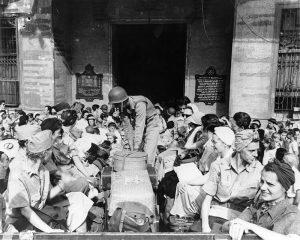 January 1945. At the time the nurses were finally released, it was found that they had lost, on average, 30% of their body weight during internment, and subsequently experienced a degree of service-connected disability “virtually the same as the male ex-POW’s of the Pacific Theater.” Davison’s body weight dropped from 156 pounds to 80 pounds.
January 1945. At the time the nurses were finally released, it was found that they had lost, on average, 30% of their body weight during internment, and subsequently experienced a degree of service-connected disability “virtually the same as the male ex-POW’s of the Pacific Theater.” Davison’s body weight dropped from 156 pounds to 80 pounds.
Finally, General Douglas MacArthur, emboldened by the success of the Raid at Cabanatuan, ordered Major General Vernon D Mudge to make an aggressive raid on Santo Tomas in the Battle of Manila in 1945. The internees at Santo Tomas, including the nurses, were liberated on February 3, 1945, by a “flying column” of the 1st Cavalry.

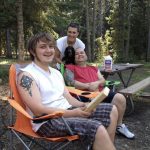 My son-in-law, Kevin Petersen is a car fanatic. He loves classic cars, and knows just how to make them shine. From the engine to the paint job, Kevin has the skills. His dad, Dean Petersen gave Kevin his 1966 Mercury Cyclone, and Kevin is slowly restoring it. Unfortunately with his rheumatoid arthritis, he can only work about an hour a day a few days a week. Still, he is getting there. Kevin rents a shop where he stores his car and his son, my grandson, Chris’ Camaro. When Kevin gets his car done, it will be stunning. Kevin has always had nice cars, usually classics. This was something Kevin shared with his boys, Chris and Josh. Its a guy thing. I don’t know many guys who don’t love cars.
My son-in-law, Kevin Petersen is a car fanatic. He loves classic cars, and knows just how to make them shine. From the engine to the paint job, Kevin has the skills. His dad, Dean Petersen gave Kevin his 1966 Mercury Cyclone, and Kevin is slowly restoring it. Unfortunately with his rheumatoid arthritis, he can only work about an hour a day a few days a week. Still, he is getting there. Kevin rents a shop where he stores his car and his son, my grandson, Chris’ Camaro. When Kevin gets his car done, it will be stunning. Kevin has always had nice cars, usually classics. This was something Kevin shared with his boys, Chris and Josh. Its a guy thing. I don’t know many guys who don’t love cars.
As his boys have grown up…Chris is 24 and Josh will be 22 on the 9th of this month…they don’t have as much time to spend with their parents. They still try to help and visit their dad and mom whenever they can, but they 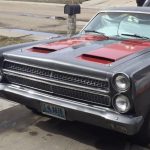
 work a lot of hours, and Chris has a family too. Of course, that is a blessing in itself. Being a grandpa has been the most wonderful thing too. Kevin has always been all about his family. His granddaughter and soon, new grandson, have him literally bursting with joy. Babies have a way of doing that. Now, as in many families, the grandparents go to visit the grandkids, at least more than the kids get to their house. The work around Chris’ schedule, but they don’t mind. They also like to FaceTime with their granddaughter, who immediately commandeers her parents’ phones to take her grandparents to her room to watch her play. Mostly she’s pretty good about keeping the conversation going, and not just getting absorbed in her play, but even if she does that, they don’t really mind. They love watching her play. She has become a great big part of their world.
work a lot of hours, and Chris has a family too. Of course, that is a blessing in itself. Being a grandpa has been the most wonderful thing too. Kevin has always been all about his family. His granddaughter and soon, new grandson, have him literally bursting with joy. Babies have a way of doing that. Now, as in many families, the grandparents go to visit the grandkids, at least more than the kids get to their house. The work around Chris’ schedule, but they don’t mind. They also like to FaceTime with their granddaughter, who immediately commandeers her parents’ phones to take her grandparents to her room to watch her play. Mostly she’s pretty good about keeping the conversation going, and not just getting absorbed in her play, but even if she does that, they don’t really mind. They love watching her play. She has become a great big part of their world.

 Kevin has always had a soft heart, but he is fiercely loyal to his family and will defend them to the end. He is always there to help whenever he can, and he is a great husband and dad. Kevin is an artist. His work is beautiful, and I love that I have been the recipient of some of his work. He has done beautiful stained glass work, paintings, and drawings. Not everyone has that ability, and so it’s awesome that my son-in-law is one that did. His disability has limited the amount of art he can do, but what he does is wonderful. Today is Kevin’s birthday. Happy birthday Kevin!! Have a great day!! We love you!!
Kevin has always had a soft heart, but he is fiercely loyal to his family and will defend them to the end. He is always there to help whenever he can, and he is a great husband and dad. Kevin is an artist. His work is beautiful, and I love that I have been the recipient of some of his work. He has done beautiful stained glass work, paintings, and drawings. Not everyone has that ability, and so it’s awesome that my son-in-law is one that did. His disability has limited the amount of art he can do, but what he does is wonderful. Today is Kevin’s birthday. Happy birthday Kevin!! Have a great day!! We love you!!
 It is common knowledge that many presidents served in the military, but for some reason, many people don’t think about the fact that, had things gone differently, that person would not have been our president. Such is the case with George HW Bush, who was a torpedo bomber pilot, stationed in the Pacific Theater of World War II. On September 2, 1944, the future President George HW Bush was on a mission when his plane was hit by Japanese anti-aircraft guns. The damage was sufficient enough that the crew had no choice but to bail out of the plane over the ocean.
It is common knowledge that many presidents served in the military, but for some reason, many people don’t think about the fact that, had things gone differently, that person would not have been our president. Such is the case with George HW Bush, who was a torpedo bomber pilot, stationed in the Pacific Theater of World War II. On September 2, 1944, the future President George HW Bush was on a mission when his plane was hit by Japanese anti-aircraft guns. The damage was sufficient enough that the crew had no choice but to bail out of the plane over the ocean.
According to the Navy’s records, Bush’s squadron was conducting a bombing mission on a Japanese installation on the island of Chi Chi Jima in the Pacific when they encountered heavy anti-aircraft fire. The engine on Bush’s plane was set ablaze, yet Bush managed to release his bombs and head back toward the aircraft carrier San Jacinto before bailing out over the water. Two other crew members perished in the attack. After floating on a raft for four hours, a submarine crew fished a safe but  exhausted Bush out of the water. Bush was given the Distinguished Flying Cross. This was not the only close call Bush had. After making a previous bombing run, he was forced to make a crash landing on water. He was rescued by a US destroyer crew on that mission. After his experience near Chi Chi Jima, Bush returned to the San Jacinto and continued to pilot torpedo bombers in several successful missions.
exhausted Bush out of the water. Bush was given the Distinguished Flying Cross. This was not the only close call Bush had. After making a previous bombing run, he was forced to make a crash landing on water. He was rescued by a US destroyer crew on that mission. After his experience near Chi Chi Jima, Bush returned to the San Jacinto and continued to pilot torpedo bombers in several successful missions.
Throughout 1944, the squadron, VT-51, of which Bush was a part, suffered a 300% casualty rate among its pilots. The squadron was based off of the USS San Jacinto, and somehow, the future president managed to win three Air Medals, as well as a Presidential Unit Citation. Over the course of his military career, Bush flew 58 combat missions during the war, and achieved the rank of lieutenant. Following his time in the South Pacific, Bush was reassigned to Norfolk Naval Base in Norfolk, Virginia in December of 1944. There he was tasked with training new pilots. He received an honorable discharge from the Navy in September 1945 after the Japanese surrender.
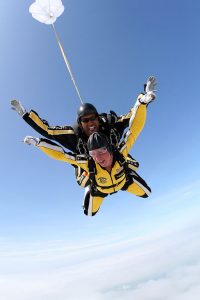
Thinking of a president as having come so close to death, and the complete change of history that his death would have brought to the United States, is an odd thought, but it was entirely possible, nevertheless. While we would not have realized the difference it would make, because we wouldn’t have know what was to be. Still, good or bad, for better or worse…it would have changed history. In this case, President George HW Bush did survive, and even continued to parachute out of planes. No one ever said exactly why he did that, but maybe it was to celebrate his bailout. Nevertheless…every 5th birthday, even on his 90th, when he was confined to a wheelchair, President Bush strapped on a parachute and bailed out of a plane. Not my idea of fun, but then I have no desire to jump out of a perfectly goo airplane. Still, there are a lot of people, including my son-in-law, Travis Royce and grandson, Caalab Royce, who think it’s a great idea. President Bush passed away on November 30, 2018 at the good old age of 94.
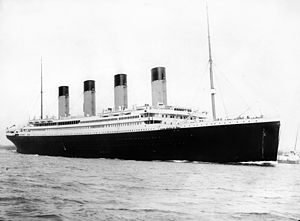 On September 1, 1985 a ship that had been missing in the North Atlantic since 1912…the RMS Titanic…was finally located, but the way in which it was found was not what it seemed to be. Everyone knows the story of Titanic, either from personal loss, history, or from recent movies on the subject, that romanticized it and endeared the ship to the world. The Titanic sank on April 15, 1912, after sailing headlong into an iceberg, while traveling at an unsafe speed, against protocol. The disaster took 1500 people to a watery grave, and changed the protocols concerning the radio room, speeds in iceberg prone areas, and radar to warn the ships about obstacles in the area.
On September 1, 1985 a ship that had been missing in the North Atlantic since 1912…the RMS Titanic…was finally located, but the way in which it was found was not what it seemed to be. Everyone knows the story of Titanic, either from personal loss, history, or from recent movies on the subject, that romanticized it and endeared the ship to the world. The Titanic sank on April 15, 1912, after sailing headlong into an iceberg, while traveling at an unsafe speed, against protocol. The disaster took 1500 people to a watery grave, and changed the protocols concerning the radio room, speeds in iceberg prone areas, and radar to warn the ships about obstacles in the area.
Oceanographer, Robert Ballard successfully found the Titanic while on a scientific mission for, of all people, the US Navy. The Navy had no interest in the Titanic, but Ballard had long wanted to find it, and he decided that the current mission would be the perfect chance to hunt for the Titanic, as well as the two submarines, USS Thresher and USS Scorpion, both of which had gone down in the North Atlantic and both of which were carrying powerful nuclear reactors. The Navy wanted to know if the Soviets had  shot down the submarined and if their nuclear material still remained 15,000 feet beneath the surface.
shot down the submarined and if their nuclear material still remained 15,000 feet beneath the surface.
Ballard asked the Navy to fund a project called Argo in the early 1980s. Argo was a submarine that could photograph the underwater to a depth of 20,000 feet. He wanted to find Titanic, but the Navy wanted to us the Argo to find the Thresher and the Scorpion. They agreed provided that he search for all three. In 1985 Ballard set out on a covert Cold War Mission, but publicly he was looking for Titanic. Ballard found the USS Scorpion, and then had just 12 days left to find Titanic. It was not going to be easy. Twelve days to find a ship that the French Research Institute couldn’t locate in five weeks.
While it seemed unlikely that the team would find the Titanic in the short amount of time they had left, their worry about the project’s success would prove unfounded. Around 2am on September 1, 1985, after over a week of taking pictures and finding nothing, the on-duty watch team called for Ballard. The Argo had spotted 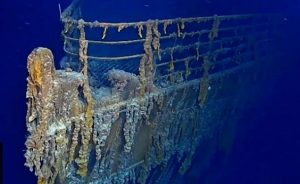 something unusual on the seafloor. As the team peered at a grainy image before realizing that they were looking at the boiler from the Titanic. The team was ecstatic, as the popped champagne for a toast. Then they realized that it was almost the exact time that Titanic went down 73 years earlier. The team felt almost as if they were violating the sanctity of a grave, even if it was well below them. Ballard later wrote, “It was one thing to have won – to have found the ship. It was another thing to be there. That was the spooky part. I could see the Titanic as she slipped nose first into the glassy water. Around me were the ghostly shapes of the lifeboats and the piercing shouts and screams of people freezing to death in the water.”
something unusual on the seafloor. As the team peered at a grainy image before realizing that they were looking at the boiler from the Titanic. The team was ecstatic, as the popped champagne for a toast. Then they realized that it was almost the exact time that Titanic went down 73 years earlier. The team felt almost as if they were violating the sanctity of a grave, even if it was well below them. Ballard later wrote, “It was one thing to have won – to have found the ship. It was another thing to be there. That was the spooky part. I could see the Titanic as she slipped nose first into the glassy water. Around me were the ghostly shapes of the lifeboats and the piercing shouts and screams of people freezing to death in the water.”

